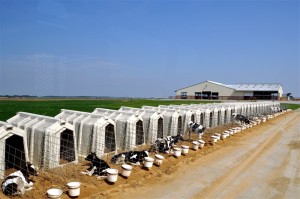State law requires counties inspect Indiana’s nearly 12,000 restaurants twice a year. But even when inspectors find mouse droppings, flies and raw meat stored at the wrong temperature, customers might have a hard time finding out about it, an I-Team 8 investigation found.
 I-Team 8 took a hidden camera into Central Indiana restaurants asking for copies of inspection reports. In four counties, the majority of restaurants wouldn’t provide a report when I-Team 8 asked to see it. Six of eight restaurants refused. One restaurant said, “I don’t have them.”
I-Team 8 took a hidden camera into Central Indiana restaurants asking for copies of inspection reports. In four counties, the majority of restaurants wouldn’t provide a report when I-Team 8 asked to see it. Six of eight restaurants refused. One restaurant said, “I don’t have them.”
Even when inspectors have found critical violations, state law mandates counties wait 10 days before making any of those results public.
I-Team 8 took the issue to Indiana State Sen. Vaneta Becker, who was part of the committee that wrote the 10-day rule 20 years ago as a then state representative. She said no one had ever challenged the 10-day rule since, despite most other states not having such a policy.
Some states post letter grades A-F right in the front window. Indiana doesn’t. I-Team 8 checked the policies of all 50 states and Washington, D.C. Six states require restaurants turn over inspection reports to customers. Many more leave it up to the counties. In South Carolina, grades are posted as a decal in the restaurant immediately after the inspection. Some states like Mississippi you can check restaurant inspections as you walk in on a smartphone app.
Although Indiana doesn’t post grades, I-Team 8 found two restaurants in the metro area that readily handed over their inspections.
“Why make you go through all that work to dig that stuff up when we have it right here?”
The manager at Culver’s in Noblesville immediately said, “I can give you our most recent one, sir,” when I-Team 8 asked for an inspection report.
At Pizza King in Cumberland an employee said, “Yes! They’re supposed to be right here.”
It’s company policy at both Culvers and Pizza King.
“That’s why we have to keep them here,” the Pizza King employee said. “It has to be open to the public, so people can look at it.”
Culvers keeps a copy handy. In fact, the manager said his restaurant helped with Hamilton County Health Department’s online system.
“They post all the health inspections too because we helped them set up the program,” the manager said.
Culver’s owner Jeff Meyer said keeping the inspections on-site is about customer convenience.
“You can log on online and see for yourself, so why make you go through all that work to dig that stuff up when we have it right here?”




.jpg) stated or insinuated such a claim," said state health department spokeswoman Amy Reel.
stated or insinuated such a claim," said state health department spokeswoman Amy Reel..jpg) cantaloupes and surface areas at Chamberlain Farms in Owensville.
cantaloupes and surface areas at Chamberlain Farms in Owensville..jpg) doubt she would know to wash fresh produce. More and more often the attitude is becoming, if it looks clean, let’s eat it.”
doubt she would know to wash fresh produce. More and more often the attitude is becoming, if it looks clean, let’s eat it.”.jpg)
.jpg) sickened 146 people.
sickened 146 people..jpg) Davis said.
Davis said.